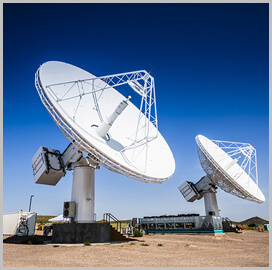Johns Hopkins University’s Applied Physics Laboratory (JHU APL) has developed a radar technology designed to help the U.S. Space Force track satellites and other objects in space.
JHU APL said Thursday that its Deep Space Advanced Radar Concept or DARC technology uses a dish antenna array to demonstrate space object tracking. The laboratory primarily used commercial off-the-shelf hardware to build DARC as a way of reducing technical risks.
“There are potentially many applications for a system that allows coherent synchronization of radars,” said Donna Bush, who manages the DARC program for the laboratory.
APL delivered DARC to the Space Force last year and served as the program’s design agent. DARC builds on a 2009 study conducted by NASA to explore how an array of small antennas can serve as a lower-cost alternative to a single large antenna.





